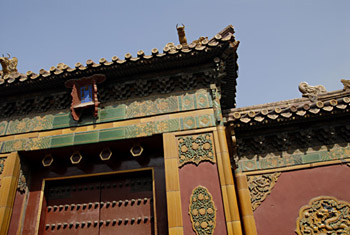
Closeup of one of the many buildings in the Forbidden City
Photo by Lucie Field


Day 4 (Sunday) - Beijing
|
|
 
Day 4 (Sunday) - Beijing
|

Photo by Gene Field
|
|
Sunday morning our itinerary destination was the Forbidden City. But before we went there, we were taken to the Beijing Yejin Hospital to visit the Department of Traditional Chinese Medicine and Health Care – what seemed to be an herbal pharmacy.
|
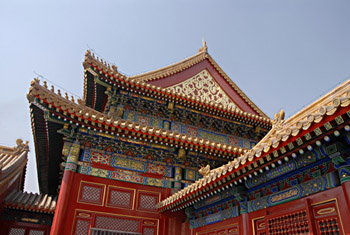
Rooftops in the Forbidden City Photo by Lucie Field |
| ||
|
Small courtyard in the Forbidden City |
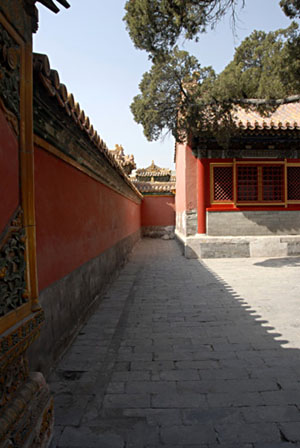
| ||
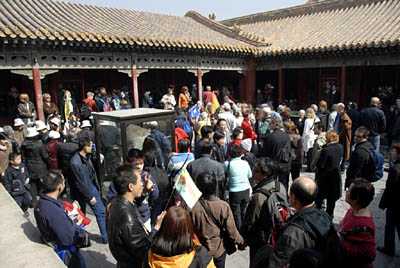 Trying to follow the M-6 flag
Trying to follow the M-6 flagPhoto by Gene Field 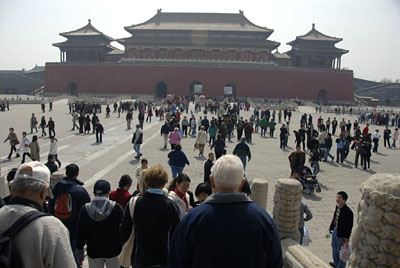
|
There were already hundreds of people touring the site when we arrived and we were told we had to follow our guide through the complex. This meant we could not go off on our own to look at things or take pictures. As we continued through one section to another we could see how easy it was to lose track of our group so we had to watch for the little blue flag with the M-6 on it which our guide held up above him as he took us through the crowds. This would definitely be a place where you would want to spend the entire day.
| ||

|
The building on the right has not been repainted while the building on the left has. They are working at restoring as much as possible before all the visitors come for the 2008 Olympics.
|
|
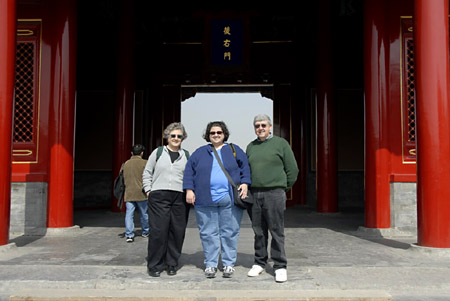
|
Anne, Lucie and Gene at the top of one of the buildings we passed through.
|
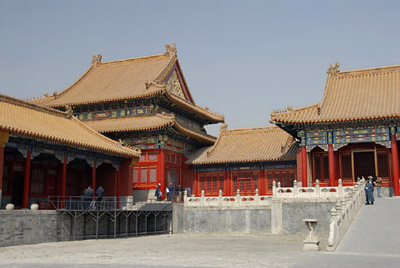
|
On the left hand side of this picture was the treasure house where gold bricks were stored. Out of the picture are ramps which went up to the top of the low wall. The gold would be taken in carts up the ramp to be stored in the treasure house..
|
|
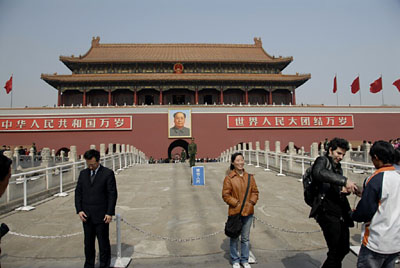
|
The south gate of the Forbidden City, the Tiananmen Gate, with a picture of Mao looking out at Tiananmen Square.
|
|
In order to get across the busy street to Tiananmen Square we had to walk down to the underground crossing. Traffic in China stops for no one and many times the only was we could cross a street was for our guide to run into the street with his flag and hold up traffic. Even then, drivers drove right around him and traffic did not stop until several of the group ventured out into the street together. Drivers were irritated at having to stop for pedestrians.
|
||

|
Tiananmen Square – at least one part of it, since it was huge. We are walking another half mile to our bus. Once on the bus we headed off to lunch in the old part of the city.
|
|
| 16 April 2006 | [China Trip index|next] |